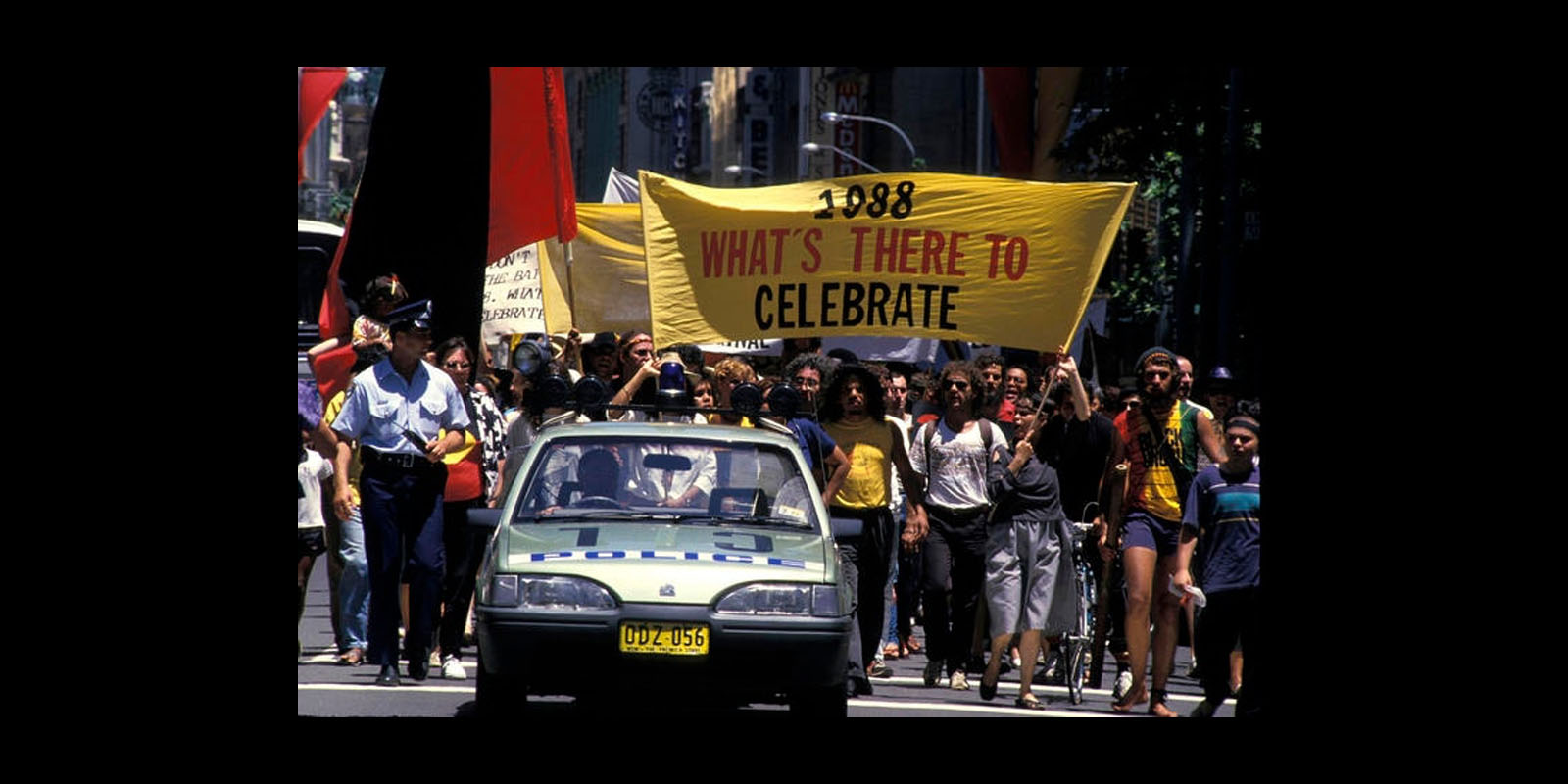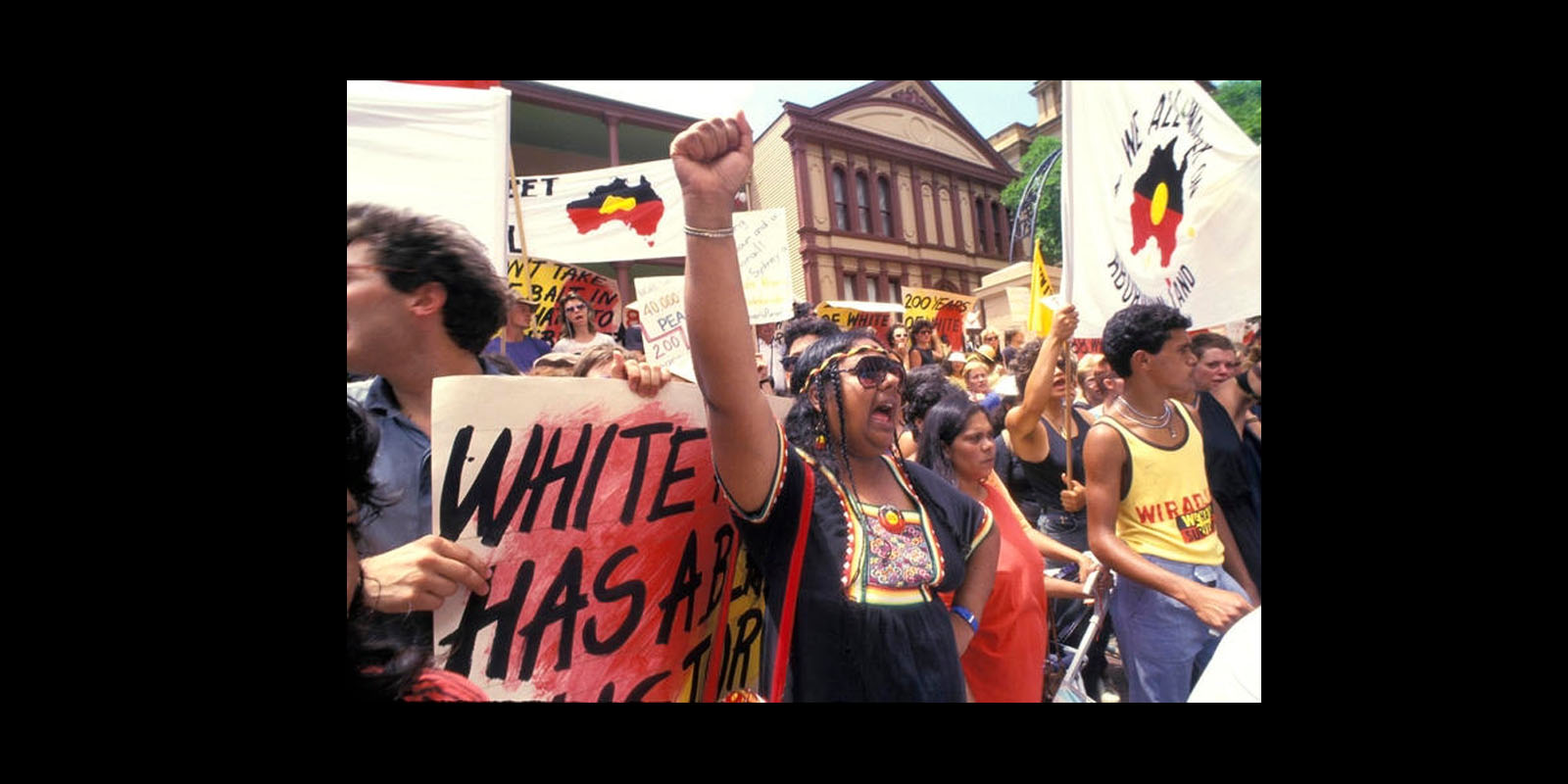A bicentenary is the two-hundredth anniversary of a significant event. On the 26th of January 1988, many Australians celebrated the bicentenary of the arrival of the 11 ships of the first fleet in Botany Bay and Sydney Cove on Bidegal and Gadigal Country.
This event signified the founding of the colony of New South Wales, the first colony in what would become the nation of Australia. Events held to celebrate this milestone in Sydney included re-enactments of the first fleet’s arrival, a parade and concerts.
The Protest
At the same time as the Bicentenary celebrations, more than 40,000 Aboriginal people and non-Indigenous supporters, staged what was at the time the largest march ever held in Sydney. There were busloads of Aboriginal people from other states and rural and remote communities who arrived to join the protest.
The protest was held because the colonisation of Australia which caused injustice, suffering and dispossession of Aboriginal people was being celebrated.


The protesters marched through Sydney chanting for land rights – very similar to the Invasion Day protest we currently hold all over the country – and ended at Hyde Park where several prominent Aboriginal leaders and activists spoke. Among the speakers was activist Uncle Gary Foley, who said:
Let's hope Bob Hawke and his Government gets this message loud and clear from all these people here today. It's so magnificent to see black and white Australians together in harmony. This is what Australia could and should be like.
The protest was a challenge to white Australia’s construction of the landing of the first fleet and what it represented. It was a statement of survival, it showed that despite Australian history excluding Aboriginal voices, we were still here and we would continue to fight for our rights.
While people were celebrating the colonisation of Australia, protesters drew both national and international attention to Australia's ongoing history of colonisation. It aimed to educate the public about the poor conditions of Aboriginal health, education and welfare, of the high imprisonment rates and the number of deaths in custody suffered by Aboriginal people.
Aboriginal people called on the Australian public to join the protest in solidarity and to make the point to the rest of Australia that the whole idea of the Bicentenary celebration was based on hypocrisy and lies. The message was and still is to this day ‘White Australia has a Black History.’


The Bicentenary protest was carried out in the spirit of the Day of Mourning protest that took place in 1938, on the 150th anniversary of the landing of the first fleet. This legacy continues in the current marches and protests organised by Mob to fight for rights and justice.
The protest march was both a confirmation of our Mobs' survival and a reminder of the lies and misconceptions on which the celebration was based and supported. While the celebrations focused on the ‘discovery’ of Australia with a re-enactment of the arrival of the first fleet, the protest was a reminder that Australia had been inhabited at least 65,000 years before European invasion.
Sources used in writing this article:
- Indigenous Protest, Australian Bicentenary, 1988, Museums Victoria
